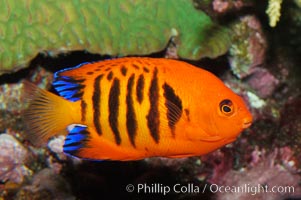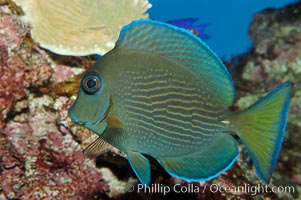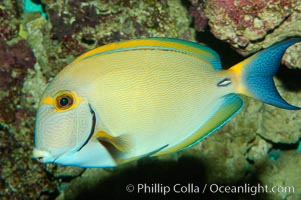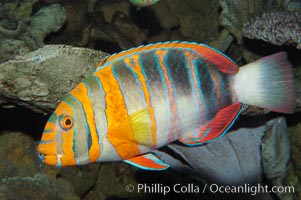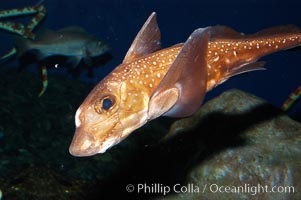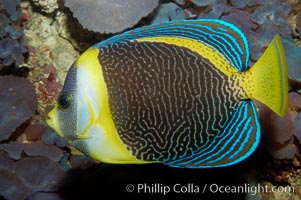
Detail within the Mandelbrot set fractal. This detail is found by zooming in on the overall Mandelbrot set image, finding edges and buds with interesting features. Fractals are complex geometric shapes that exhibit repeating patterns typified by self-similarity, or the tendency for the details of a shape to appear similar to the shape itself. Often these shapes resemble patterns occurring naturally in the physical world, such as spiraling leaves, seemingly random coastlines, erosion and liquid waves. Fractals are generated through surprisingly simple underlying mathematical expressions, producing subtle and surprising patterns. The basic iterative expression for the Mandelbrot set is z = z-squared + c, operating in the complex (real, imaginary) number set.
Species: Mandelbrot fractal, Mandelbrot set
Image ID: 10395
Species: Mandelbrot fractal, Mandelbrot set
Image ID: 10395
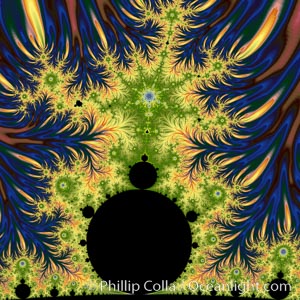
The Mandelbrot Fractal. Fractals are complex geometric shapes that exhibit repeating patterns typified by self-similarity, or the tendency for the details of a shape to appear similar to the shape itself. Often these shapes resemble patterns occurring naturally in the physical world, such as spiraling leaves, seemingly random coastlines, erosion and liquid waves. Fractals are generated through surprisingly simple underlying mathematical expressions, producing subtle and surprising patterns. The basic iterative expression for the Mandelbrot set is z = z-squared + c, operating in the complex (real, imaginary) number set.
Species: Mandelbrot fractal, Mandelbrot set
Image ID: 18729
Species: Mandelbrot fractal, Mandelbrot set
Image ID: 18729
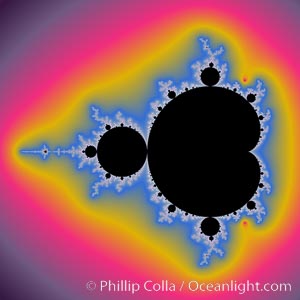
The Mandelbrot Fractal. Fractals are complex geometric shapes that exhibit repeating patterns typified by self-similarity, or the tendency for the details of a shape to appear similar to the shape itself. Often these shapes resemble patterns occurring naturally in the physical world, such as spiraling leaves, seemingly random coastlines, erosion and liquid waves. Fractals are generated through surprisingly simple underlying mathematical expressions, producing subtle and surprising patterns. The basic iterative expression for the Mandelbrot set is z = z-squared + c, operating in the complex (real, imaginary) number set.
Species: Mandelbrot fractal, Mandelbrot set
Image ID: 18731
Species: Mandelbrot fractal, Mandelbrot set
Image ID: 18731
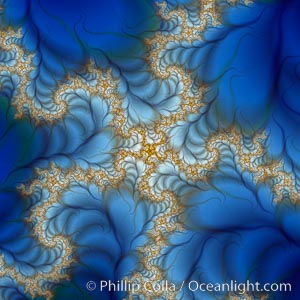
Fractal design. Fractals are complex geometric shapes that exhibit repeating patterns typified by self-similarity, or the tendency for the details of a shape to appear similar to the shape itself. Often these shapes resemble patterns occurring naturally in the physical world, such as spiraling leaves, seemingly random coastlines, erosion and liquid waves. Fractals are generated through surprisingly simple underlying mathematical expressions, producing subtle and surprising patterns. The basic iterative expression for the Mandelbrot set is z = z-squared + c, operating in the complex (real, imaginary) number set.
Species: Mandelbrot fractal, Mandelbrot set
Image ID: 18732
Species: Mandelbrot fractal, Mandelbrot set
Image ID: 18732
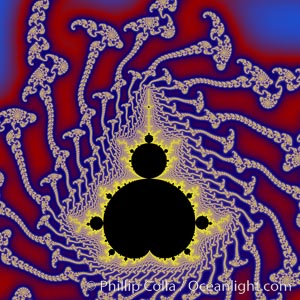
The Mandelbrot Fractal. Fractals are complex geometric shapes that exhibit repeating patterns typified by self-similarity, or the tendency for the details of a shape to appear similar to the shape itself. Often these shapes resemble patterns occurring naturally in the physical world, such as spiraling leaves, seemingly random coastlines, erosion and liquid waves. Fractals are generated through surprisingly simple underlying mathematical expressions, producing subtle and surprising patterns. The basic iterative expression for the Mandelbrot set is z = z-squared + c, operating in the complex (real, imaginary) number set.
Species: Mandelbrot fractal, Mandelbrot set
Image ID: 18737
Species: Mandelbrot fractal, Mandelbrot set
Image ID: 18737
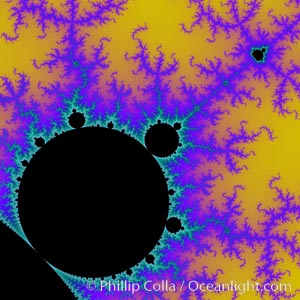
The Mandelbrot Fractal. Fractals are complex geometric shapes that exhibit repeating patterns typified by self-similarity, or the tendency for the details of a shape to appear similar to the shape itself. Often these shapes resemble patterns occurring naturally in the physical world, such as spiraling leaves, seemingly random coastlines, erosion and liquid waves. Fractals are generated through surprisingly simple underlying mathematical expressions, producing subtle and surprising patterns. The basic iterative expression for the Mandelbrot set is z = z-squared + c, operating in the complex (real, imaginary) number set.
Species: Mandelbrot fractal, Mandelbrot set
Image ID: 18739
Species: Mandelbrot fractal, Mandelbrot set
Image ID: 18739
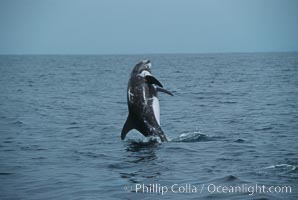
Rissos dolphin, breaching. Note distinguishing and highly variable skin and dorsal fin patterns, characteristic of this species. White scarring, likely caused by other Risso dolphins teeth, accumulates during the dolphins life so that adult Rissos dolphins are almost entirely white. San Diego.
Species: Risso's dolphin, Grampus griseus
Location: San Diego, California
Image ID: 00983
Species: Risso's dolphin, Grampus griseus
Location: San Diego, California
Image ID: 00983
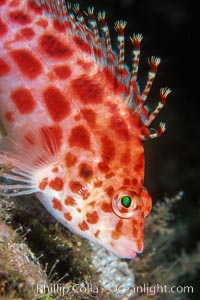
Coral hawkfish.
Species: Coral hawkfish, Cirrhitichthys oxycephalus
Location: Wolf Island, Galapagos Islands, Ecuador
Image ID: 02432
Species: Coral hawkfish, Cirrhitichthys oxycephalus
Location: Wolf Island, Galapagos Islands, Ecuador
Image ID: 02432
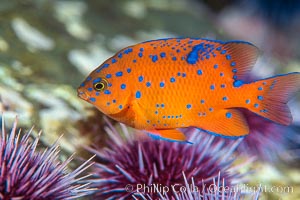
Juvenile garibaldi and purple urchins, Coronado Islands.
Species: Garibaldi, Hypsypops rubicundus, Strongylocentrotus purpuratus
Location: Coronado Islands (Islas Coronado), Baja California, Mexico
Image ID: 02513
Species: Garibaldi, Hypsypops rubicundus, Strongylocentrotus purpuratus
Location: Coronado Islands (Islas Coronado), Baja California, Mexico
Image ID: 02513
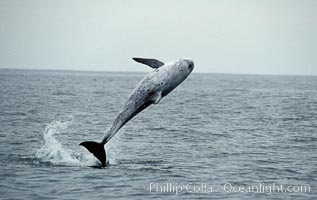
A Rissos dolphin leaps from the ocean in a full breach. Note distinguishing and highly variable skin and dorsal fin patterns, characteristic of this species. White scarring, likely caused by other Risso dolphins teeth, accumulates during the dolphins life so that adult Rissos dolphins are almost entirely white. Offshore near San Diego.
Species: Risso's dolphin, Grampus griseus
Location: San Diego, California
Image ID: 07597
Species: Risso's dolphin, Grampus griseus
Location: San Diego, California
Image ID: 07597
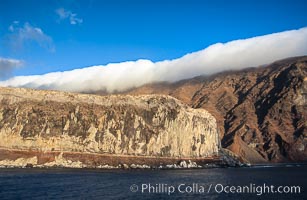
Clouds held back by island crest.
Location: Guadalupe Island (Isla Guadalupe), Baja California, Mexico
Image ID: 03848
Location: Guadalupe Island (Isla Guadalupe), Baja California, Mexico
Image ID: 03848
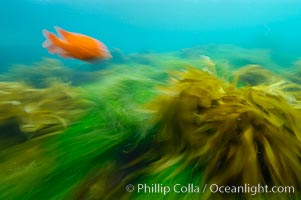
A garibaldi fish (orange), surf grass (green) and palm kelp (brown) on the rocky reef -- all appearing blurred in this time exposure -- are tossed back and forth by powerful ocean waves passing by above. San Clemente Island.
Species: Surfgrass, Hypsypops rubicundus, Phyllospadix
Location: San Clemente Island, California
Image ID: 10238
Species: Surfgrass, Hypsypops rubicundus, Phyllospadix
Location: San Clemente Island, California
Image ID: 10238
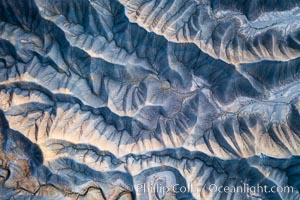
Erosion patterns in the Utah Badlands, aerial abstract photo.
Location: Hanksville, Utah
Image ID: 38017
Location: Hanksville, Utah
Image ID: 38017
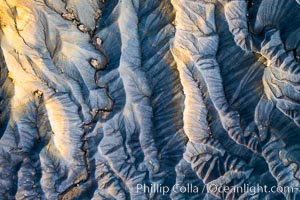
Erosion patterns in the Utah Badlands, aerial abstract photo.
Location: Hanksville, Utah
Image ID: 38018
Location: Hanksville, Utah
Image ID: 38018
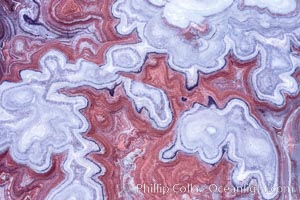
Fantastic colorful sedimentary patterns, Bentonite layers are seen as striations exposed in the Utah Badlands, part of the Brushy Basin shale member of the Morrison Formation. This layer was formed during Jurassic times when mud, silt, fine sand, and volcanic ash were deposited in swamps and lakes. Aerial photograph.
Location: Utah
Image ID: 38019
Location: Utah
Image ID: 38019
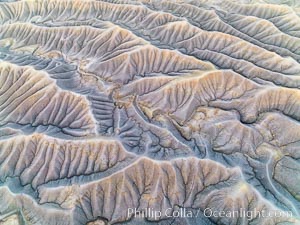
Erosion patterns in the Utah Badlands, aerial abstract photo.
Location: Hanksville, Utah
Image ID: 38032
Location: Hanksville, Utah
Image ID: 38032
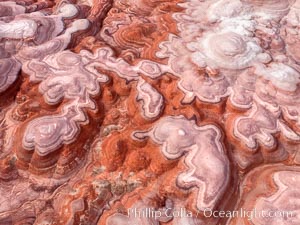
Fantastic colorful sedimentary patterns of Bentonite layers, seen as striations exposed in the Utah Badlands. The Bentonite Hills are composed of the Brushy Basin shale member of the Morrison Formation formed during Jurassic times when mud, silt, fine sand, and volcanic ash were deposited in swamps and lakes into layers, now revealed through erosion. Aerial photograph.
Location: Utah
Image ID: 38067
Location: Utah
Image ID: 38067
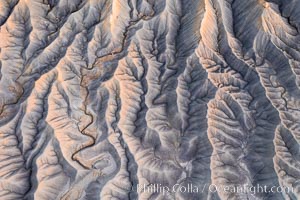
Erosion patterns in the Utah Badlands, aerial abstract photo.
Location: Hanksville, Utah
Image ID: 38170
Location: Hanksville, Utah
Image ID: 38170
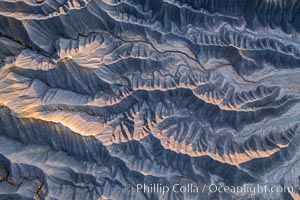
Erosion patterns in the Utah Badlands, aerial abstract photo.
Location: Hanksville, Utah
Image ID: 38173
Location: Hanksville, Utah
Image ID: 38173
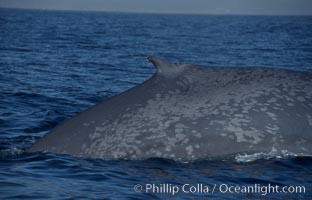
An enormous blue whale rounds out (hunches up its back) before diving. Note the distinctive mottled skin pattern and small, falcate dorsal fin. Open ocean offshore of San Diego.
Species: Blue whale, Balaenoptera musculus
Location: San Diego, California
Image ID: 07573
Species: Blue whale, Balaenoptera musculus
Location: San Diego, California
Image ID: 07573
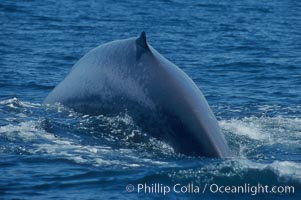
An enormous blue whale rounds out (hunches up its back) before diving. Note the distinctive mottled skin pattern and small, falcate dorsal fin. Open ocean offshore of San Diego.
Species: Blue whale, Balaenoptera musculus
Location: San Diego, California
Image ID: 07577
Species: Blue whale, Balaenoptera musculus
Location: San Diego, California
Image ID: 07577
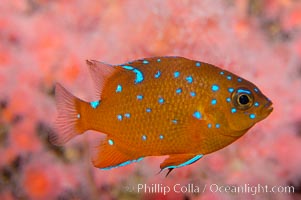
Juvenile garibaldi displaying distinctive blue spots.
Species: Garibaldi, Hypsypops rubicundus
Location: California
Image ID: 09388
Species: Garibaldi, Hypsypops rubicundus
Location: California
Image ID: 09388
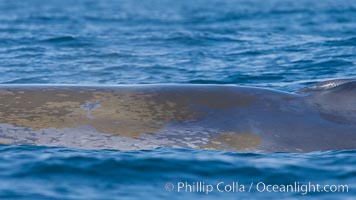
Blue whale rounding out at surface, before diving for food, showing characteristic blue/gray mottled skin pattern.
Species: Blue whale, Balaenoptera musculus
Location: Dana Point, California
Image ID: 27346
Species: Blue whale, Balaenoptera musculus
Location: Dana Point, California
Image ID: 27346
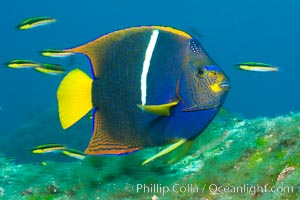
King angelfish in the Sea of Cortez, Mexico.
Species: King angelfish, Holacanthus passer
Location: Sea of Cortez, Baja California, Mexico
Image ID: 27474
Species: King angelfish, Holacanthus passer
Location: Sea of Cortez, Baja California, Mexico
Image ID: 27474
